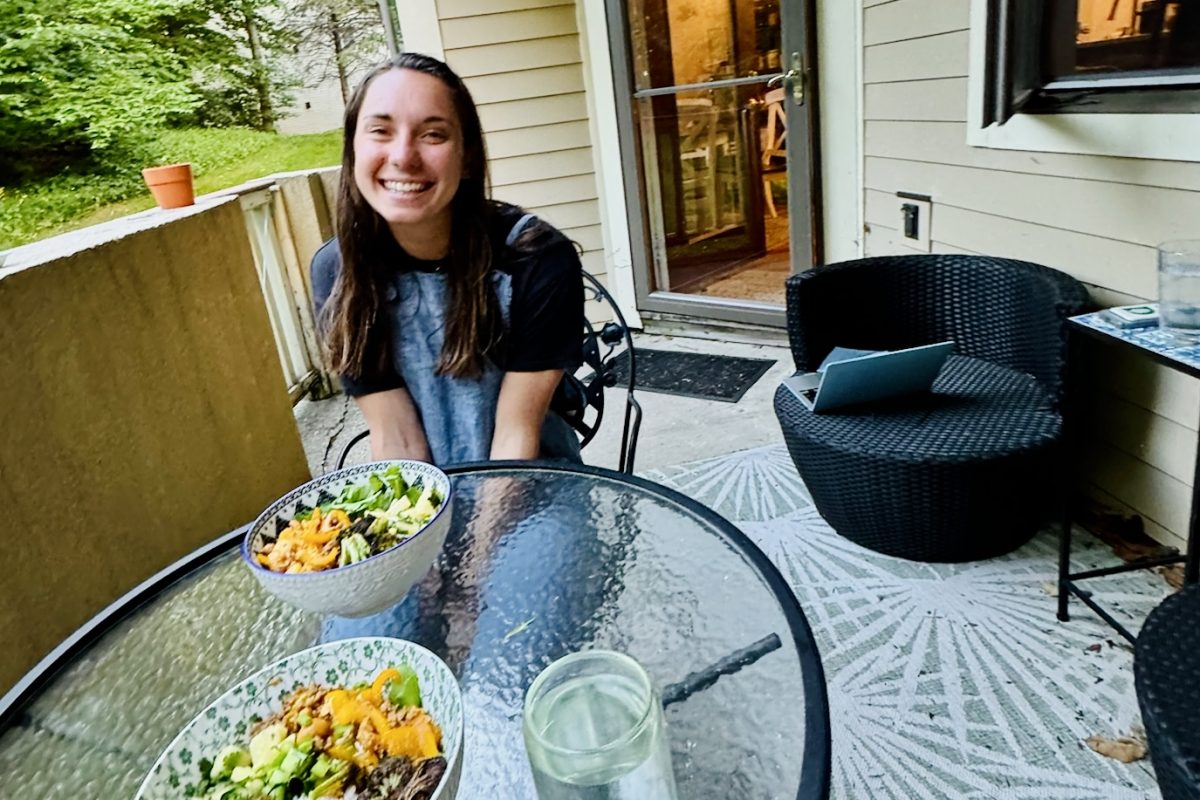The “First Tracks” series highlights the pregnancy, postpartum, and parenting experiences of noteworthy athletes in cross-country skiing in various stages of their professional careers. The sharing of these experiences can benefit athletes in any stage of their career, whether they are an elite or recreational skier, by demonstrating that it is very possible to return to skiing, competition, and an active lifestyle with a growing family. The series will include the physical challenges of being an athlete during and after pregnancy, balancing family life with skiing, and the joy that starting a family can bring.
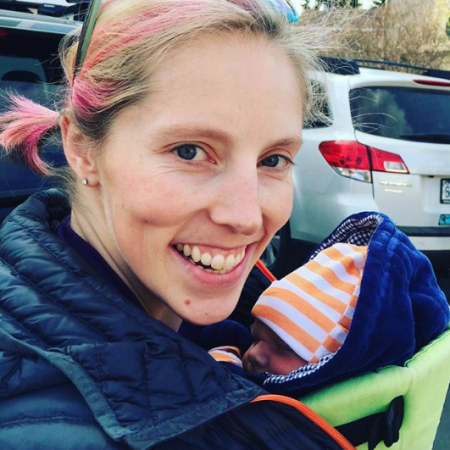
As she was the only U.S. Olympian and mom in PyeongChang and the first female American skier to start a family during her professional career, Kikkan Randall has led by example in the realm of training through and recovering from pregnancy. Her gold medal demonstrates that it is completely possible to return to competition after pregnancy stronger than ever. While Randall acknowledges how fortunate she was to have an uncomplicated pregnancy through which she could train at a level most would find astonishing, her experience should instill confidence in women that hope to remain active during and after pregnancy in order to maintain the active lifestyle to which they are accustomed.
Randall and her husband, Jeff Ellis, knew that they wanted to start their family in 2016. As that was not a World Championship year and it was not an Olympic year, the timing was ideal for her to miss a season on the World Cup. As the couple began trying to conceive, Kikkan was able to maintain her normal training volume without worrying about its effect on her fertility, still participating in team camps and following her training plan. In fact, she discovered she was pregnant shortly after returning from a training camp in Norway.
“A few weeks before that, Jeff had gotten a Diet Coke can on the airplane and it said ‘dad’ on it,” Randall shared in an interview. “There were just some funny things that ended up being a premonition or something.”
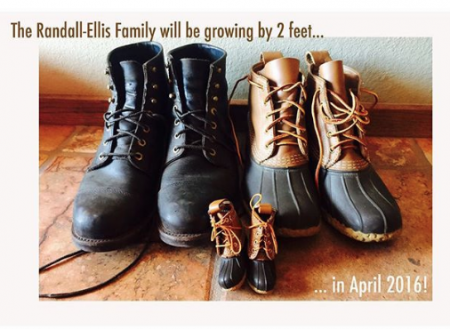
Once the couple found out they were pregnant, Randall’s training plan adapted to accommodate the new toll on her body, however, it did not change as much as one might think.
“Up until the point I found out that I was pregnant, I was training full bore as if I was preparing for the season ahead,” said Randall. “Once I found out I was pregnant, the goal shifted slightly in that I was no longer trying to be in top physical shape for the race season, but I was curious about how much training I could do. So as long as I followed how my body felt, I continued doing intervals twice a week, strength training twice a week, long things. I really continued the training as normal, although I did notice in that second month quickly the extra load on my system. All of a sudden stuff just felt harder.”
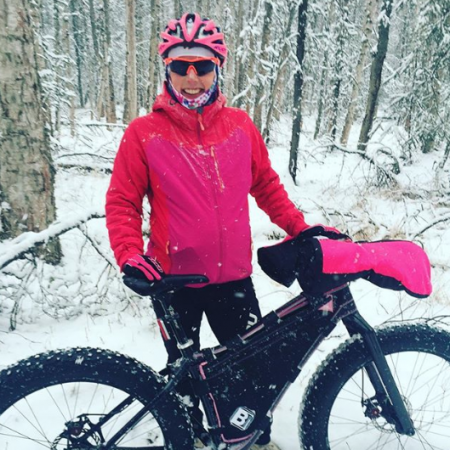
Despite things feeling more challenging, Randall was able to maintain a high training load throughout her pregnancy. She typically trained twice a day all the way through her third trimester, incorporating running, both skate and classic skiing, snow biking, and strength workouts. Once she was in the later stages of pregnancy and her belly had grown substantially, she avoided exercises that required jumping because of the added load on her joints and those that required her to lie on her back for long periods of time, which is recommended to pregnant women as the pressure on the inferior vena cava, one of the major arteries responsible for returning blood from the lower extremities to the heart, can restrict blood flow and cause complications.
“Around the seven month mark, running started to get pretty uncomfortable,” shared Randall. “I had a little bit of separation in the front of my pelvic bone. I did some running on an anti-gravity treadmill which helped a bit, and then after a while, I was like okay, I don’t need to push it anymore. So I didn’t run that last month and a half of pregnancy. I did some hiking, especially where I could finish on an uphill and not do too much downhill.”
One thing that challenged Randall was the lack of information pertaining to high-level athletes training through pregnancy. As it is difficult to conduct medical studies on pregnant women and so few elite athletes had chosen to get pregnant during their professional career, there was a dearth of resources explaining what she should and should not do.
“That part wasn’t as cut and dry as I would have liked,” she said. “I was asking a lot of questions to a lot of people, but there wasn’t a lot of stuff out there that was concrete about what you can or can’t do. Thankfully, my doctors were supportive. They said, ‘Keep doing what you’re doing because that’s what your body is used to. Just listen to it.
“My strength training coach had actually been through a pregnancy the year before herself, so she was helpful in knowing what the load on the body would be and modifying strength plans slightly,” she continued. “My personal coach, Erik Flora, was really helpful because he’s been with his wife through three pregnancies, so we worked together to design a training plan that was appropriate. I looked for stories on the internet of other elite athletes that had gone through it. I reached out to Lauren Fleshman, the runner, she gave me some tips. But a lot of it was just experimentation.”
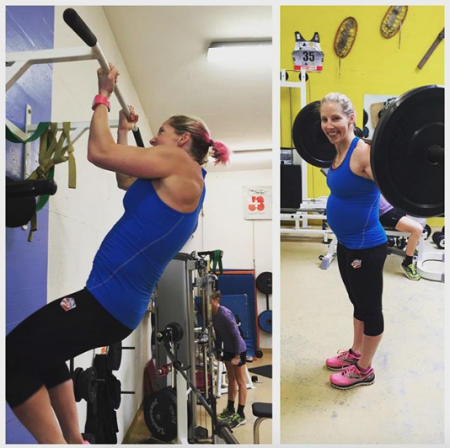
Randall seemed to handle pregnancy in stride, adjusting to the changes in her body well and looking forward with anticipation. Her only emotional hurdle was simply remaining home during the winter, rather than the heading to Europe for the World Cup race season.
“It was a little bit difficult, I had to miss a season of racing,” Randall shared. “When all my teammates left for the season and I was up in the middle of the night watching them, I really missed the racing and being there together with them.
“But I was also really excited to be a parent,” she continued. “I was really excited with how the process [of pregnancy] was going. I was pleasantly surprised with how much I was able to do and how I felt.”
Randall also handled the uncertainty of what her recovery would look like with the positivity and resilience for which she is known.
“I think I went into it with the right mindset,” she said. “I had four Olympics up to that point and a very successful career, so I knew that if for some reason I wasn’t able to come back, I could still be satisfied with my career and I think that took a lot of the pressure off. I was also pretty optimistic and confident that I would come back as strong as ever and I had a lot of really great support. The ski team was really supportive, my sponsors were supportive, my husband was really supportive. So I just looked at it with a lot of optimism and excitement.”
Perhaps a challenge unique to the world of professional athletes for whom training and racing is their career, maternity leave takes a new shape as women are not able to perform at their normal level during or immediately after their pregnancy. This extended leave has been met with mixed results as more an more professional athletes are choosing to start their families during, rather than after, their career. As aforementioned retired track athlete Lauren Fleshman illuminated, pregnancy is not always well-received by sponsors, since the athlete’s need to step away from high-level training and competition for at least a year decreases the visibility of the sponsored products.
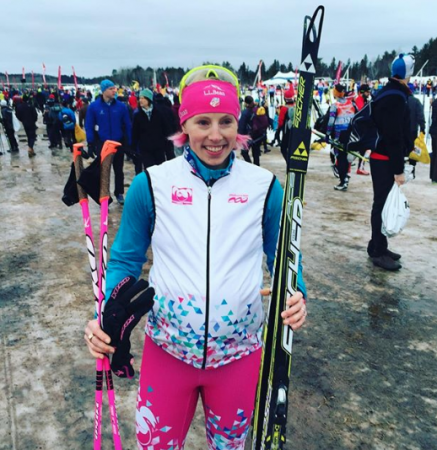
Luckily, Randall’s experience in this regard was quite positive.
“I was proactive with all my sponsors,” said Randall. “I alerted them that ‘hey, we’re going to try to have a kid in the next year. So if I do, how can we renegotiate or keep our relationship going?’ Recognizing that they wouldn’t get the benefit of me out there racing and getting in the results, being on the podium, and getting them the exposure that way, I just proposed other ways that I could be valuable to them. Whether it was writing content for their website or social media, whether it was doing in-person appearances. So with each of my sponsors, I came up with a unique set of things that I could do since I was going to be home, not going to be away racing all the time, and they were really receptive to that. So it just took some creativity on my part.
“I think everybody was really psyched to see that I wanted to continue racing, that I wasn’t seeing this as an either-or option, so everybody was really supportive,” she continued.
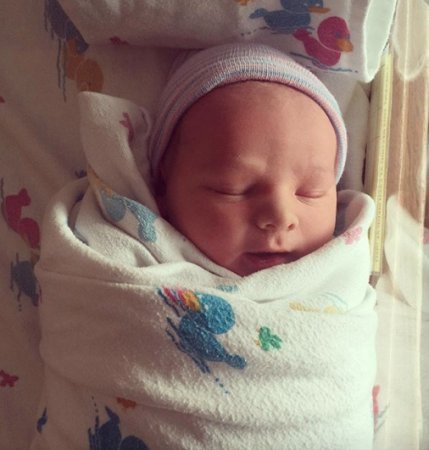
Randall also felt that pregnancy is handled fairly within the International Ski Federation (FIS) in terms of her ability to preserve her World Cup starts after a year away from racing.
“When you let FIS know that you’re going to be missing a season, they put it into the same category as if you were injured,” Randall explained, “which some people really take offense to because they say ‘Pregnancy isn’t an injury.’ But that was just a technicality, basically, what they do is allow you to freeze your points so that when you come back, there is a slight penalty for not having raced the previous year, but you don’t have to start from zero again which is really nice. So I was pretty happy with that process; it was really easy to just let them know, and then my points were frozen and when I came back, things got restarted again, so that was really good.”
Randall gave birth to her son, Breck Stuart Randall Ellis, on April 14th of 2016. Because Randall possesses a genetic blood clotting factor, she had been on a blood thinner throughout her pregnancy as a precaution. In order to keep her labor and delivery a bit more controlled, the doctors advised her to be induced when she reached full term at 39 weeks.
“They had done a procedure in the office the day before, so by the time I got to the hospital and they hooked me up to the monitors, I was already having super mild contractions, which I couldn’t quite even feel yet,” said Randall.
“They started me on one unit of Pitocin over half an hour… that got things going real quick!” she laughed. “It kind of skipped the slow build up stage and I went into having contractions every 90 seconds pretty intense and that was making me throw up, which was causing more contractions. So I battled through that for a couple of hours, trying all of the various techniques and everything.
“Then the doctors checked me and I hadn’t made a single millimeter of progress,” she continued. “Basically, because it was so intense, I was kind of fighting myself. So after a few hours of that without making any progress, we started talking about an epidural, because my doctor really thought that would just help me relax. And at that point, I was pretty open to the idea. So I got an epidural, and then for the next few hours, I was able to sleep a bit and that did allow me to relax, so the next time she checked I was ready to go.”
From there, Randall’s delivery went smoothly. Breck entered the world at a whopping 8lbs 11oz, 21 inches in length.
“I had a great team,” Randall concluded. “My husband was there, I had a midwife and my doctor, and some great nurses involved. So, yeah, at 7:47 – we didn’t know what we were having, so it was a fun surprise, and the rest is history!”
Stay tuned for part two in which Kikkan shares her return to training after pregnancy, traveling on the world cup with Breck, and how parenting has changed since she retired and has been undergoing treatment for breast cancer.
Rachel Perkins
Rachel is an endurance sport enthusiast based in the Roaring Fork Valley of Colorado. You can find her cruising around on skinny skis, running in the mountains with her pup, or chasing her toddler (born Oct. 2018). Instagram: @bachrunner4646


